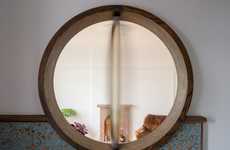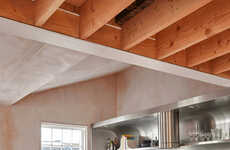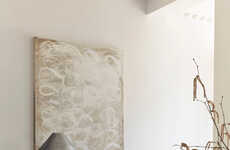
Proctor and Shaw Used a Minimalist Color Palette for This Abode
Kalin Ned — January 17, 2019 — Art & Design
References: proctorandshaw & dezeen
Using design cues and tapping into contemporary sensibilities, architecture studio Proctor and Shaw is able to transform this early 20th-century abode into a stylish London apartment. For the project, the firm used a combination of elements and design decisions that push the minimalist agenda. For one, the color palette is strikingly subtle. Throughout the space, one is met with natural tonalities that are described as "ceramic-inspired hues." Capitalizing on this ethereal and simple aesthetic, Proctor and Shaw deliberately adds an attention-captivating feature which produces a nice and delicate juxtaposition.
The stylish London apartment is divided by an elegant grooved wooden wall. The full-height partition is designed with the notion of separating the space into "living and sleeping quarters" which is a popular approach in contemporary interior configurations.
Photo Credits: Ståle Eriksen
The stylish London apartment is divided by an elegant grooved wooden wall. The full-height partition is designed with the notion of separating the space into "living and sleeping quarters" which is a popular approach in contemporary interior configurations.
Photo Credits: Ståle Eriksen
Trend Themes
1. Minimalist Aesthetics - Architecture firms can explore the use of natural tonalities and subtle color palettes to push the minimalist agenda in interior design.
2. Space Division - The use of elegant grooved wooden walls to divide living spaces is a design cue that can be explored in contemporary interior configurations.
3. Contemporary Sensibilities - Design firms can tap into contemporary sensibilities to transform early 20th-century abodes into stylish apartments.
Industry Implications
1. Architecture and Interior Design - The use of minimalist aesthetics and space division for contemporary interior configurations presents disruption opportunities for architectural and interior design firms.
2. Real Estate - The transformation of early 20th-century abodes into stylish apartments offers disruption opportunities in the real estate industry.
3. Construction - The incorporation of elegant grooved wooden walls as space dividers presents disruptive innovation opportunities for the construction industry.
1.7
Score
Popularity
Activity
Freshness























